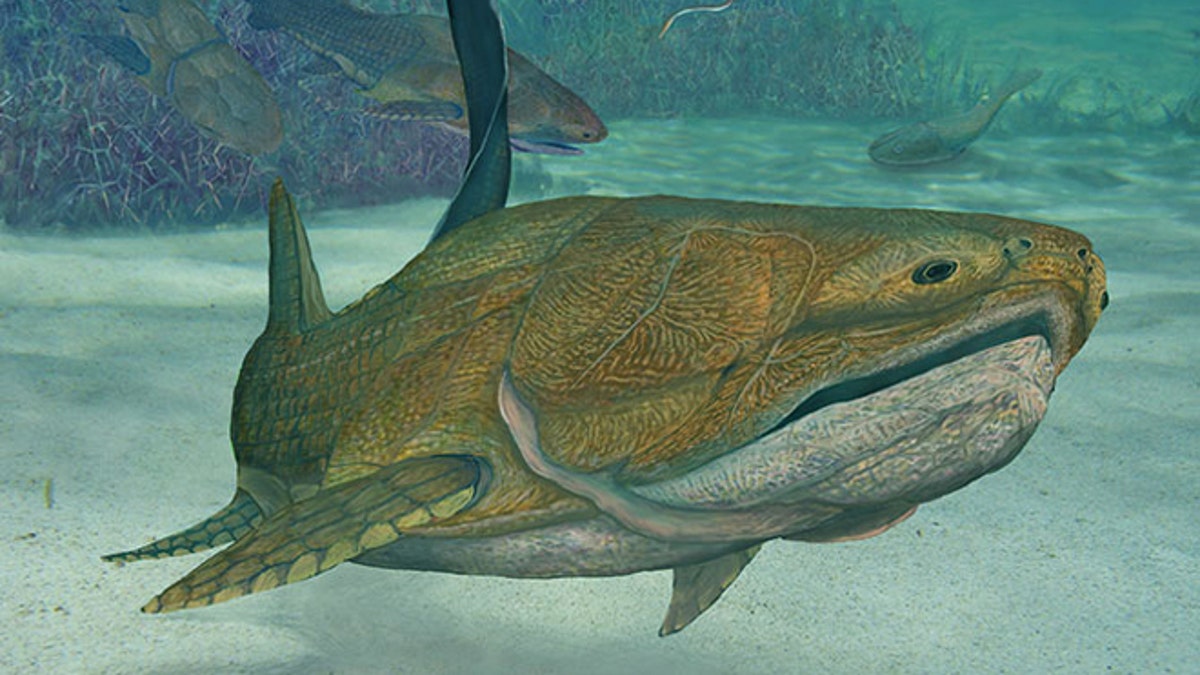
The earliest known species with what we would recognize as a face was an armored, beady-eyed prehistoric fish.
The earliest known species with what we would recognize as a face was an armored, beady-eyed prehistoric fish, according to a new paper in the journal Nature.
The fish, entelognathus primordialis (meaning “primordial complete jaw”), is the oldest known animal to have face-forming jaw and cheek bones comparable to those of today’s bony fishes and most terrestrial animals, including us.
PHOTOS: Whole Foods Seafood Ban: Meet The Fish
“Entelognathus had a rather unprepossessing face,” co-author Per Erik Ahlberg of Uppsala University told Discovery News. “The mouth was wide, the forehead low and flat, and the small, close-set and almost immobile eyes pointed forwards like a pair of car headlights.”
[pullquote]
Lead author Min Zhu, of the Chinese Academy of Sciences’ Institute of Vertebrate Paleontology and Paleoanthropology, added that entelognathus was “a placoderm, an extinct grade of primitive armored fishes.”
Zhu and colleagues found the 419-million-year-old fish at Xiaoxiang Reservoir in Quijing, Yunnann, China. He said that at first it didn’t seem very interesting, covered with material from the site, but when they brought it back to the lab and cleaned it up, the fish’s “superb preservation,” armor and facial bones became evident.
Before fish had faces like those of modern species, they looked downright bizarre, suggests Matt Friedman, a lecturer in paleobiology at the University of Oxford. Friedman, along with Martin Brazeau, authored a commentary about the new fish for Nature.
Friedman told Discovery News that some fossil jawless fishes “had broad, shovel-shaped heads with their eyes placed on top, while others had narrow bodies and skulls with their eyes on either side of the head.”
Both Friedman and study co-author Brian Choo said that a handful of jawless fishes -- the eel-like lampreys and hagfishes -- are still alive today.
“They actually have a peculiar tongue-like structure that bears horny teeth, and the end of this is mobile,” Friedman said. “It’s very strange, a bit like the second mouth that issues from the alien in the 'Aliens' films. Lampreys are made even stranger by having a modified disc around their mouth that they use to adhere to other fishes.”
It remains a mystery as to why fish evolved cheek and jaw bones. The researchers suspect that the ancestors of Entelognathus moved away from the bottom of the seafloor to spend more time in the water column. There, jaws would have helped them to catch larger and more mobile prey.
Qs From Kids: Why Don't Fish Get Water In Their Eyes?
Choo further suspects that jaws might have “evolved initially for breathing, as an apparatus to control the flow of water across the gills.”
For the most part, however, the fish probably hunted near the bottom of the seafloor, catching small, slow prey, such as worms. Ahlberg said that there were considerably larger fish in the same water, “including some with scary-looking teeth,” which probably preyed on Entelognathus that enjoyed some degree of protection from its thick armor exterior.
Friedman and Brazeau call the new fish discovery “jaw dropping.” The find suggests that the bones of the human skull and face, as well as the collarbone at the base of our necks, are remnants of ancient placoderm armor.
The discovery could also change how we view ancient marine dwellers. Previously, the ancestors of modern jawed animals were commonly portrayed as fishes with a shark-like appearance. The newly found prehistoric fish “puts a new face” on the original jawed species, Friedman and Brazeua write.
“There has been a long tradition of portraying sharks as especially primitive,” Friedman said. “This is common in textbooks and documentaries that falsely claim that sharks are ‘living fossils’ and have gone unchanged for millions of years.”
In fact, it now appears that bony fishes and land animals with jaws -- including humans -- retain some primitive features from the last common ancestor of modern jawed species.
Sharks, conversely, turn out to be the ones with the more recently evolved, specialized body plan.
